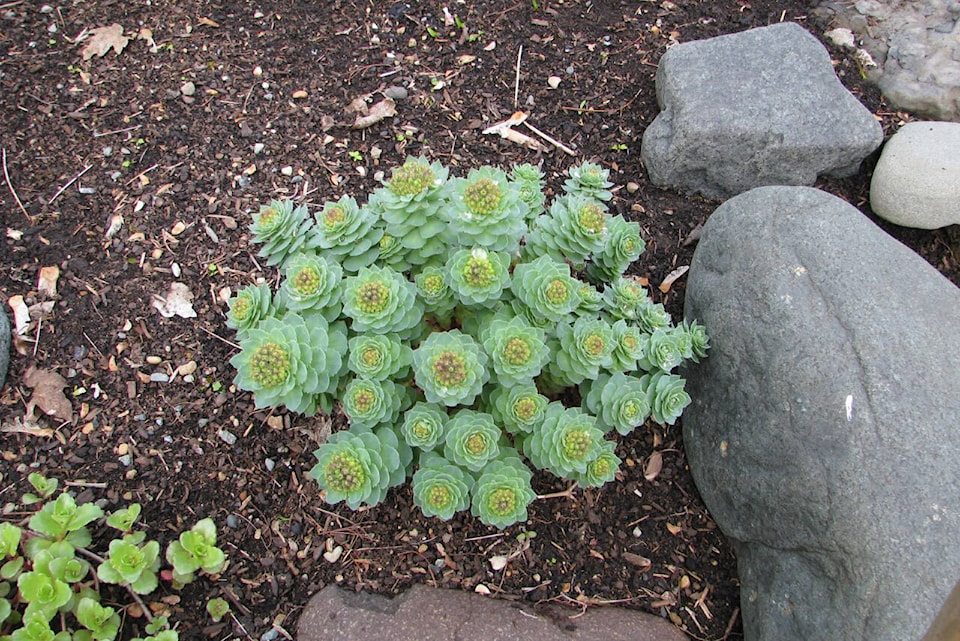BY LESLIE COX
Special to the Record
A couple of days of sun and warmer temperatures and I swear John’s clumps of Aquilegia vulgaris (columbine) grew an inch each day! Could it mean spring is on its way? I was sure of it when I saw the neighbour’s crocuses were in bloom.
Ah, heck. It’s snowing and a north wind is blowing strong enough to drop the temperature another four or five degrees into negative territory. But I shouldn’t whine. I heard the temperature in some place in northern Canada was going to drop from -30 something to -40 something with the wind chill. Don’t think their gardening season will be starting anytime soon.
Thinking back to those warmer days spent cleaning the leaf mulch off my beds, I remembered I wanted to look for more information about my rhodiola rosea plant. (You might know it as golden root or rose root.)
This is a plant John found at a plant sale close to 20 years ago. It languished in its pot for a couple of years before he offered it to me for my garden.
This was before we seriously got started on the front garden makeover so I planted the rhodiola in one of the few spots I had – on the edge of the bed under the European hedge maple (Acer campestre). A year or two later I planted a hydrangea beside it.
You can probably guess what happened in this part of my garden, right? The hydrangea grew to soon overshadow the rhodiola plant through most of the growing season – except in late winter/early spring whilst the hydrangea was still just bare branches. Like now. And dang it! Now that my garden expansion is almost complete, this is the year I am definitely transplanting this tough little plant to a more suitable spot.
Hence the research to find out exactly what conditions this particular plant needed. Turns out I do not need to worry about this plant suffering any frost damage if I place it out in the open. Rhodiola rosea is hardy to Zone 1! This means it is hardy to -50 C so would barely shiver in the current cold conditions up north. Mind you, I doubt the young leaf buds are breaking on the plants up north as they are on mine here in Zone 7a.
Now I understand the third common name for rhodiola – arctic root. And it is classified as an herb with the roots being the part of the plant of greatest importance.
Commercially, the roots are harvested every four or five years, chipped, dried and then put through a process to extract their beneficial chemical compounds.
It was interesting to read how much rhodiola is valued for its use in traditional medicine. In Asia and Eastern Europe, the extract is used to treat depression, prevent altitude sickness, improve memory function and eliminate fatigue. (The last two would be helpful going into final exams, wouldn’t they? I just might have passed my calculus final in college.)
This extract has been classified as an adaptogen which, in essence, means it assists in stimulating changes in the body to resist stress. It also contains a range of antioxidant compounds and we all know how beneficial those are for good health.
Boy! It is a good thing rhodiolas are tough for mine to have survived almost two decades of pure neglect. Will definitely give it more respect.
~ ~ ~ ~ ~
I am offering five of my workshops via Zoom “Soil Tips for Spring and Combatting Climate Change in Today’s Garden.” Workshop details are on my website: https://duchessofdirt.ca/ under ‘presentations.’ Online registration is open.
Leslie Cox co-owns Growing Concern Cottage Garden in Black Creek.
